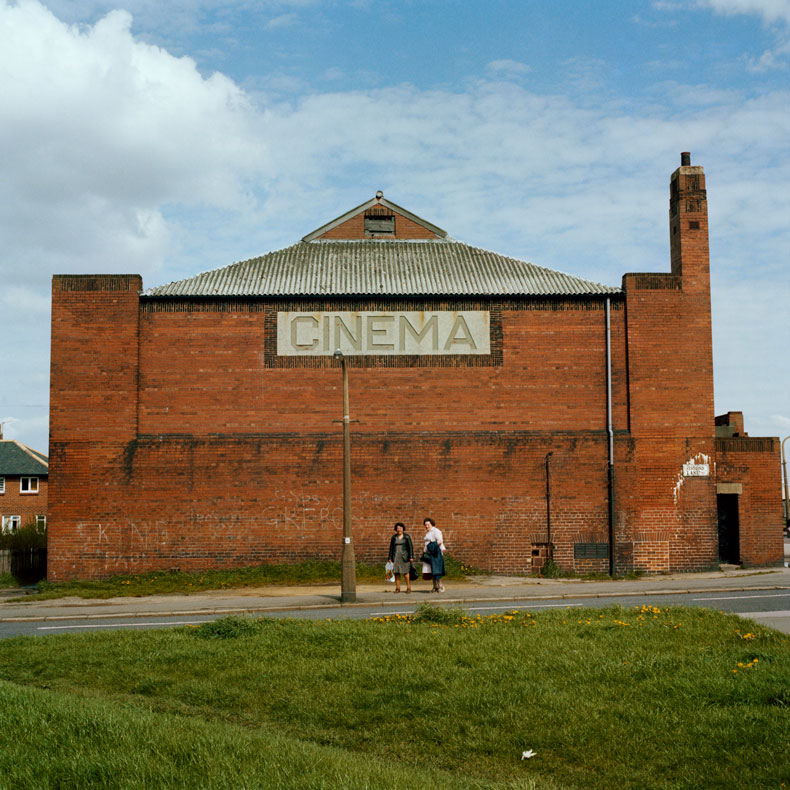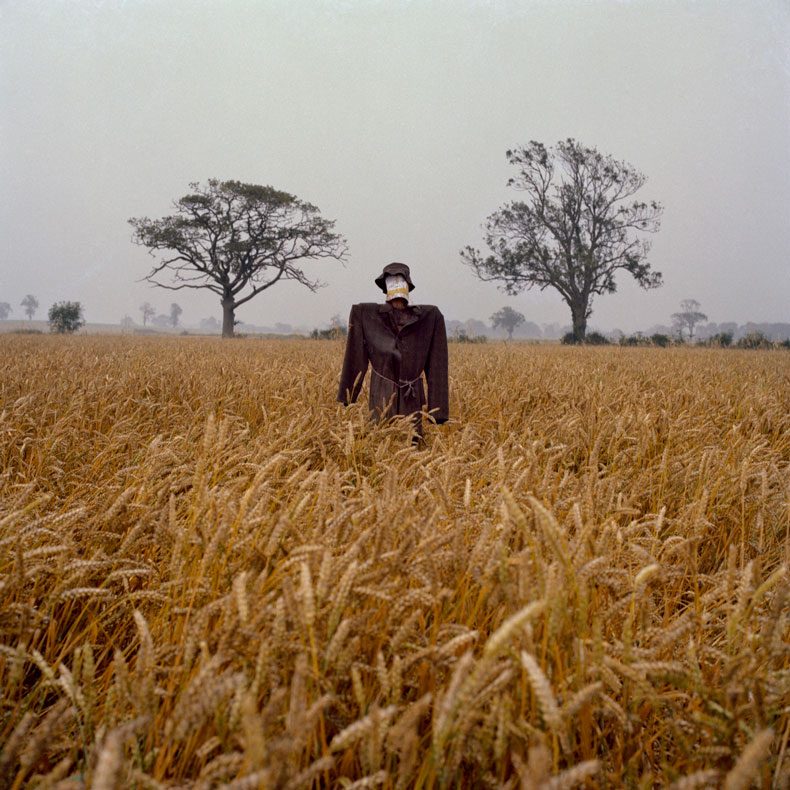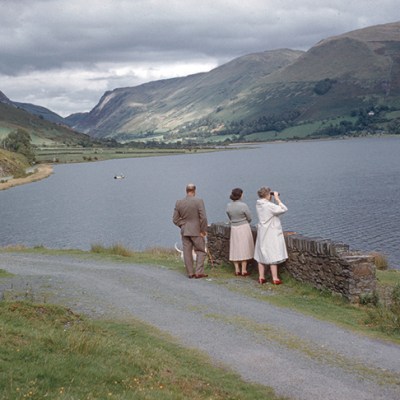The emergence of colour photography as an artistic medium is often framed as an American story. Arriving on the heels of Pop art, the colour images of everyday Americana taken in the 1960s – gas stations and roadside diners, vibrant vehicles and street scenes – shaped the iconography of post-war consumerism. The hero of this version of the story is William Eggleston, whose divisive solo exhibition at the Museum of Modern Art in New York in 1976 was a watershed moment in the history of the medium. At the same time in the UK, however, the British photographer Peter Mitchell was documenting the decline and redevelopment of Leeds, producing a record of its buildings, shopfronts and working-class communities in striking colour. Now in his early eighties, Mitchell is the subject of a retrospective at the Photographers’ Gallery in London – an opportunity to celebrate his lasting contribution to the rise of colour photography in Britain.
Born in Eccles in Greater Manchester, Mitchell spent his childhood in London. After studying at Hornsey College of Art, he moved to Leeds in 1972; initially squatting with a group of friends, he soon purchased a house in Chapeltown, just north of the city centre, where he has lived and worked ever since. Framed by the distinctive square dimensions of his Hasselblad camera, Mitchell’s shots of Leeds capture a city constantly transitioning from one phase to the next. The buildings in his photographs show signs of strain, their bricks weathered by time and soot, or else already derelict, awaiting their demolition. In 9-17 Howden Place, Hyde Park, Leeds (c. 1970s) we see a narrow redbrick terrace perched precariously on a slope. These houses are variations on a theme: each one tells a story of abandonment and disrepair, windows bricked and boarded up, several missing roof tiles. The strong diagonal of the picture makes it seem as though the houses are toppling already, destined for the same fate as the bricks strewn in the foreground. ‘[T]he microbes of time are at work, and all that is solid melting,’ Mitchell has said. ‘The underlying chase in these pictures is one of fixing transitory locations – things slip out of life and out of place and the photograph’s role is to fix this bruise of memory.’
Two anonymous ladies, Tivoli Cinema, Acre Road from Sisson’s Lane, Leeds, 1976 (1976), Peter Mitchell. © Peter Mitchell

In 1979, Mitchell mounted an exhibition of his pictures inspired by a NASA space probe sent to Mars. Juxtaposing his own photographs of Leeds, London and Sheffield with images taken by the Viking 4 Lander, Mitchell presented his work as that of a visitor from another planet, each image mounted with a border of co-ordinates and measurements. Nevertheless, his photographs convey a sense of intimacy with the places and the people shown, recalling work by Eugène Atget, who photographed the streets of Paris in the early 1900s. Though Mitchell’s work is elegiac, depicting the erosion of a former generation and its way of life, his use of colour transmits something of this life into the future. Whether the bright red of a knitted cardigan or the royal blue sign of a crumbling newsagent’s, these splashes of colour seem like transmissions from the recent past. Mitchell’s best-known series documents the deconstruction of the Quarry Hill Flats, an ambitious social housing complex opened in 1938, designed to house 3,000 people. A vision of affordable homes for working-class residents, Quarry Hill and its massive curves are reminiscent of Chris Killip’s photographs of shipbuilding in Tyneside, taken in 1975; capturing the last breaths of a waning industry, Killip’s series, like Mitchell’s, also documents the passing of a community, of a way of life. ‘Times change and I know there was no point in keeping Quarry Hill Flats,’ Mitchell has written. ‘But what it stood for might have been worth keeping.’
Perhaps the highlight of this exhibition are several large-scale photographs of scarecrows, a series taken over the course of 40 years. Frightening and melancholic, Mitchell’s scarecrows are (in two senses) full of personality; they are emotional, lonesome and static figures; at the same time, they seem capable of movement, as if the photographs had stopped them in their tracks. One picture shows a scarecrow apparently bleeding from the shoulder, as though fatally wounded; arms outstretched in a lopsided crucifixion, the scarecrow echoes Robert Capa’s famous photograph The Falling Soldier (1936), of a Republican militiaman during the Spanish Civil War. The spectral quality of Mitchell’s work is carried through his portraits of the local Ghost Train operator, Francis Gavan, pictured over several decades. Mitchell’s photographs consistently remind us that every street corner and empty field is haunted by a ghostly past.
Scarecrow 28 from the series Scarecrows (1974–2015) by Peter Mitchell. © Peter Mitchell

‘Peter Mitchell: Nothing Lasts Forever’ is at the Photographers’ Gallery until 15 June.



